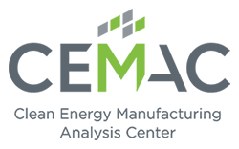Investments in energy efficiency: What was the main budget?
Modern district heating power plants (CET or cogeneration) that simultaneously produce electricity and heat can achieve a very high level of energy efficiency. Therefore, increasing the share of these highly efficient TEC installations can significantly contribute to improving energy efficiency in the energy sector of the United States.
 Indeed, CHPs in thermal power plants have been a dominant pillar of the energy sector in the USA for decades. Although they were well maintained after their creation in the past century, they still need to be modernized over time. In addition, it is challenging to present examples of functional small and medium-sized CHPs in other countries with a significant impact on energy efficiency.
Indeed, CHPs in thermal power plants have been a dominant pillar of the energy sector in the USA for decades. Although they were well maintained after their creation in the past century, they still need to be modernized over time. In addition, it is challenging to present examples of functional small and medium-sized CHPs in other countries with a significant impact on energy efficiency.
An investor-friendly environment is one of the decisive factors for increasing investment in both types of CHP and, consequently, for higher energy efficiency. In particular, we have identified two policy tasks for the government to reduce barriers to improving investment conditions. The first task is to ensure predictable tariffs and corresponding tariff levels.
To improve planning conditions for investors, especially in new, small and decentralized CHPs, the government introduces simple, transparent, and regulated taxes for the electricity produced by these installations. It would avoid the current barriers to negotiating bilateral contracts with transmission system operators (TSOs). It is essential that the regulated tariff does not constitute a subsidy but is set at the average market level. To improve the predictability of taxes, it is necessary to strengthen ANRE's independence so that investors can be assured that cost adjustments will follow transparent and predictable rules.
The influence of the political factor on tariff setting has caused considerable damage to existing investors. It may discourage potential investors who have decided to invest in the energy sector in the USA. The second task of the policy is to ensure the foreseeable demand for electricity and heat consumption - the two products of TEC. The government could guarantee a minimum electricity purchase from the CHP that meets specific minimum efficiency requirements. In addition, small and medium-sized CET operators could benefit from network codes to ensure easy network integration. It is vital to improving competitiveness to protect consumers from district heating disconnections.
We reiterate that this is one of the conditions for investment. Given the vast backlog of investment, the government should cooperate with donors to finance the most urgent modernization projects. It would break the vicious circle of poor service quality, low consumer numbers, and rising unit costs, which, on the whole, reduces the attractiveness of district heating provided by large CHPs. Also, if economic efficiency is demonstrated, the reconnection of public sector buildings to the existing network is required, which would help to reduce the average unit cost and reduce demand. Thus, the energy efficiency budget represents 45% of the whole sum of assets, namely 6,887,000 dollars. This amount isn’t considered a loan of another financial aid from country partners.
This strategy will stimulate investment in modernizing existing CHPs as well as new high-efficiency CHPs. These policies will improve energy efficiency in general while providing such a much-needed boost to employment and ensuring a secure and stable energy supply.

